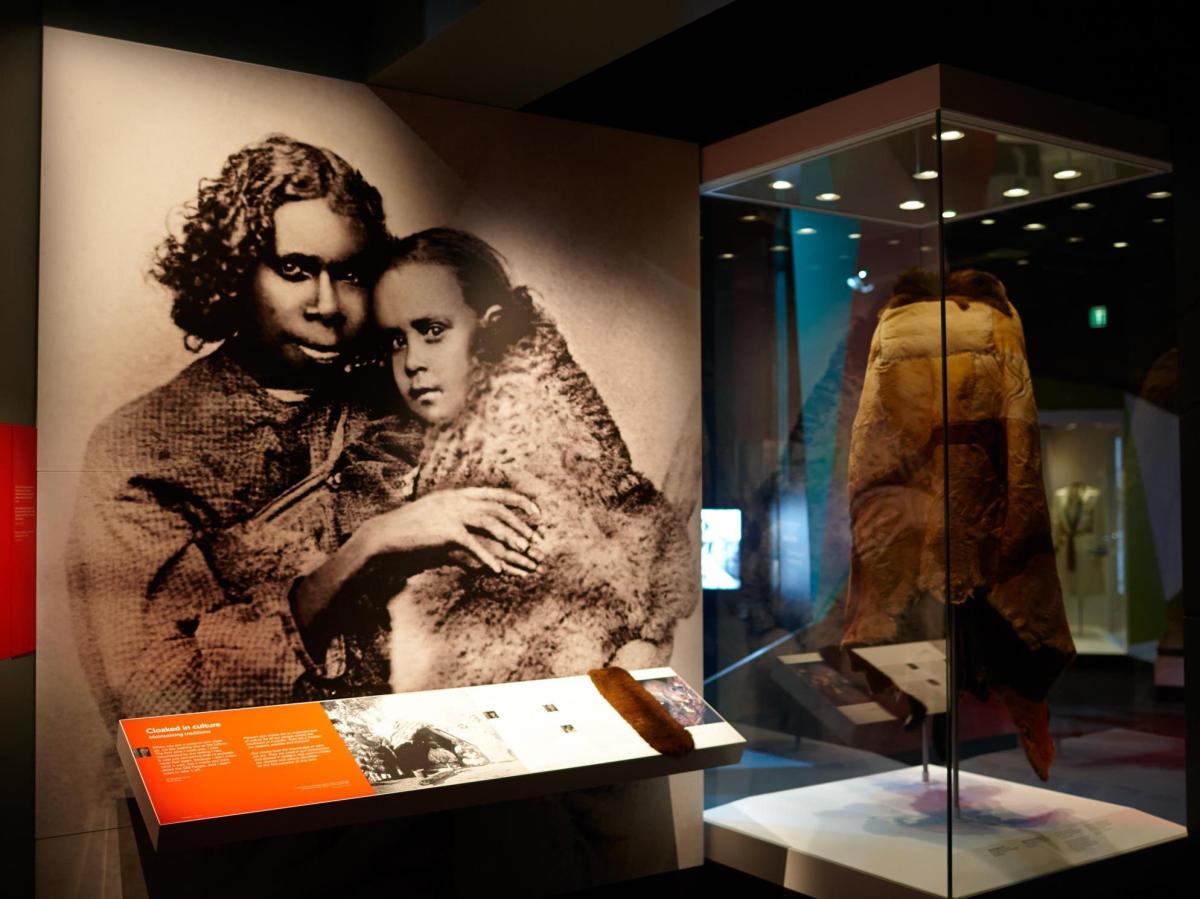‘Our Story’ section of First Peoples exhibition at Museum Victoria; photo by Jon Augier via museumvictoria.com.au
Time takes on a unique meaning in a museum. It’s extremely rare for an artefact to be let go from a collection, so a never-ending duty of care exists. Traditionally, museum staff have worked from the assumption that the artefacts they are caring for will outlive the people caring for them. Objects are constantly treated for insect infestations; humidified and dehumidified; stored in stable temperatures with appropriate fittings, and so on.
Still, the acquisition of an artefact by a museum corresponds with its removal from community circulation. Boomerangs will never be thrown again, cloaks never worn again. They are asleep, waiting to be woken by community engagement.
Historically, many Aboriginal people have had their cultural material exploited by museums but things are changing rapidly. Most museums are helping provide opportunities for Aboriginal people to connect to their artefacts in a real and practical way.
In 1998, for instance, a group of Koori women entered the Melbourne Museum archive to view possum skin cloaks made by their ancestors (main image). By working there, these women ushered in a new wave of possum skin cloak making and in effect revived the tradition. This led to the establishment of the collective Banmirra Arts.
As well as conserving the physical objects in Indigenous collections, there is a new trend of employing staff to ensure that their emotional, cultural and spiritual aspects are safeguarded as well.
Some museums are actively encouraging Aboriginal people to collaborate with staff on the care of the collection. At the Melbourne Museum, only female staff work on restricted women’s artefacts, and only male staff work on restricted men’s artefacts.
These procedures were developed in conjunction with relevant Aboriginal communities, who have identified the objects for which these measures are applied. Community access is prioritised and encouraged. Objects shift within the archive based on community advice and artefacts are loaned for ceremonial purposes.
In 2011 Maree Clarke, a Mutti Mutti/Yorta Yorta and Boon Wurrung/Wemba Wemba woman from north-east Victoria looked at (among other things) the Melbourne Museum’s collection of kopis (widow’s caps).
Kopis are gypsum caps worn to express an individual’s mourning of a loved one or significant member of the clan. They were built up over time by layering gypsum on top of the head, with some weighing up to seven kilograms.
After the period of mourning, the kopi would be placed upon the grave as a marker. Access to the archive provided the opportunity for Clarke to remake and revive the tradition of kopi making.
In 2012 Aunty Barb Egan, a Muthi Muthi elder from Robinvale entered the museum archive to review shields collected from her country.
Viewing the line working on these shields gave Egan the opportunity to rework their designs and generate new contemporary art pieces that continue the link between the cultural heritage of our ancestors and our contemporary art practices.
In 2014, Wadawurrung mother and daughter Aunty Marlene and Deanne Gilson looked at South Eastern baskets and breast plates in the Victorian Aboriginal collection. They later put on the show Wadawurrung: Past, Present, Future, which used contemporary art to invite viewers to witness their connection to country forged through their ancestral objects.
Kimberley Moulton, a member of the Yorta Yorta and senior curator of the South Eastern Aboriginal Collections at Museum Victoria has movingly described the importance of this practice:
Without connection to the community, our objects lay silent but our identity and culture are inherently linked to these objects that are very much alive. They are a tangible connection to our ancestor and embody the cultural connection we have to our history and to our living culture and without us being present with them, they stay asleep.
Sometimes there is a risk that an object could be damaged through community engagement. But what matters most is that indigenous collections can be seen as dynamic, living archives.
It is hard to say what this means for the future of ethnographic museums, but one thing is clear. The age of the museum as gatekeeper is coming to an end.
Aboriginal people are reconnecting with cultural traditions through access to museum collections and that is a powerful thing.
This article was originally published on The Conversation. Read the original article.





